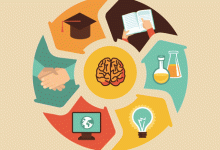Media Literacy
Find and share resources to help students learn to analyze, evaluate, and communicate in a world with countless media sources and constant access to powerful computers.
A Media Literacy Tool to Assess News Credibility
Using a memorable acronym helps students learn to assess the reliability of their news sources—and determine which stories might contain misinformation.Incorporating Images in the Classroom
By treating media like text, teachers can create a fast, relevant, and affordable lesson that stimulates lively discussion.Your content has been saved!
Go to My Saved Content.Real, Fake, or Deepfake? This Lesson Helps Students Decide
Students examine videos and online information to investigate what is real and what is not in this engaging lesson.65.3kYour content has been saved!
Go to My Saved Content.5 Ways to Build Critical Literacy in the Age of AI
With so much information—and misinformation—coming at them every day, students need to learn how to verify truth.Evaluating Primary Sources Through a See, Think, Wonder
By taking the time to observe, make inferences, and ask great questions about historical artifacts and images, students learn to avoid jumping to conclusions.What Your Students Really Need to Know About Digital Citizenship
Ideas on how to guide students to the knowledge and experience they need to act responsibly online.227.7kYour content has been saved!
Go to My Saved Content.A Teacher’s Guide to Copyright and Fair Use
There are rules when it comes to using copyrighted material in the classroom—and easy ways to make sure you’re always in the clear.96.2kYour content has been saved!
Go to My Saved Content.Teaching Adolescents How to Evaluate the Quality of Online Information
Use these strategies to help middle and high school students identify relevance, accuracy, bias, and reliability in the content they read.150.5kYour content has been saved!
Go to My Saved Content.Helping Students Navigate New Technology Responsibly
By giving students a safe way to explore using AI chatbots in the classroom, teachers can help them sharpen their digital literacy and critical thinking skills.Preparing Social Studies Students to Think Critically in the Modern World
Vetting primary resources isn’t easy—but doing it well is crucial for fostering engagement and deeper learning in a rapidly changing world.89.5kYour content has been saved!
Go to My Saved Content.Common Core in Action: 10 Visual Literacy Strategies
Visual literacy explicitly teaches a collection of competencies that will help students think through, think about, and think with pictures.172.8kYour content has been saved!
Go to My Saved Content.Using Infographics to Build Media Literacy and Higher-Order Thinking Skills
Teaching infographic literacy involves asking students to flex their critical thinking skills—and their creative muscles.41kYour content has been saved!
Go to My Saved Content.An Engaging Word Game Helps Students Grasp Implicit Bias
A simple fill-in-the-blank exercise helped students understand the power of words and the way they might convey unspoken beliefs.82.2kYour content has been saved!
Go to My Saved Content.Giving Students the Skills to Spot Fake News
By learning how to deconstruct news stories and identify media bias, students equip themselves to become smarter digital consumers.Teaching Elementary Students How to Evaluate Information They Find Online
Teachers can show students how to thrive in a connected world and use digital tools safely and effectively.7.1kYour content has been saved!
Go to My Saved Content.














